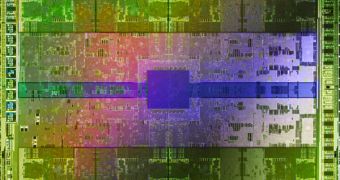Hundreds of articles have been written over the last couple of weeks regarding the much-anticipated, next-generation graphics processing unit coming from one of the industry’s top companies, NVIDIA. However, after countless rumors and various, presumably leaked, details on the upcoming GPU, the Santa Clara, California-based graphics maker has finally decided to announce some of the features and details that have been built inside its new GPU architecture, codenamed “Fermi.” The company announced today that Fermi stands at the core of the upcoming GeForce, Quadro and Tesla graphics units, providing these cards with an impressive array of features that should ultimately bring GPUs into a new segment, besides the traditional graphics.
“It is completely clear that GPUs are now general purpose parallel computing processors with amazing graphics, and not just graphics chips anymore,” said Jen-Hsun Huang, co-founder and CEO of NVIDIA. “The Fermi architecture, the integrated tools, libraries and engines are the direct results of the insights we have gained from working with thousands of CUDA developers around the world. We will look back in the coming years and see that Fermi started the new GPU industry.”
Previously codenamed GT300, the new NVIDIA GPU architecture will now be known as Fermi, as also noted above. The new design is said to be the host of a number of new technologies, which NVIDIA claims to be the “must-have” features for the computing segment. Among some of Fermi’s features, the GPU maker has highlighted the following:
C++, complementing existing support for C, Fortran, Java, Python, OpenCL and DirectCompute.
ECC, a critical requirement for datacenters and supercomputing centers deploying GPUs on a large scale.
512 CUDA Cores featuring the new IEEE 754-2008 floating-point standard, surpassing even the most advanced CPUs .
8x the peak double precision arithmetic performance over NVIDIA’s last generation GPU. Double precision is critical for high-performance computing (HPC) applications, such as linear algebra, numerical simulation, and quantum chemistry.
NVIDIA Parallel DataCache - the world’s first true cache hierarchy in a GPU that speeds up algorithms such as physics solvers, raytracing, and sparse matrix multiplication where data addresses are not known beforehand.
NVIDIA GigaThread Engine with support for concurrent kernel execution, where different kernels of the same application context can execute on the GPU at the same time (eg: PhysX fluid and rigid body solvers).
Nexus – the world’s first fully integrated heterogeneous computing application development environment within Microsoft Visual Studio.
NVIDIA hasn’t officially announced the specific architecture for its highly anticipated line of GeForce graphics cards, but recent reports on the Internet claim the new cards will likely feature 3.0 billion transistors, a 40nm TSMC manufacturing process, a 384-bit memory interface and support for up to 6GB of GDDR5 memory.

 14 DAY TRIAL //
14 DAY TRIAL //